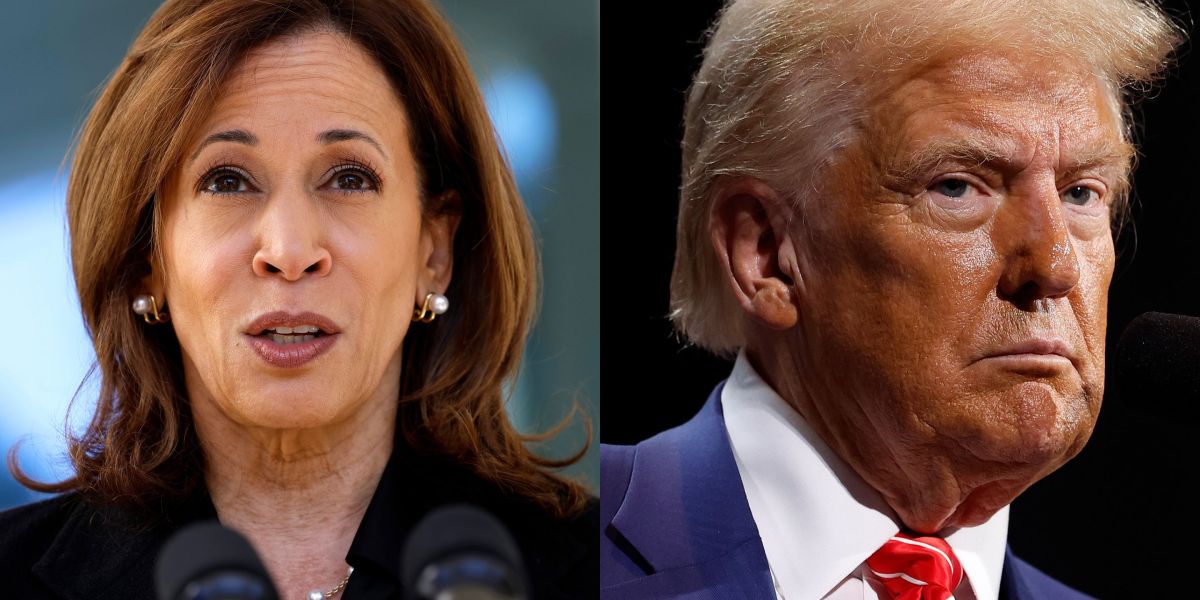With less than two weeks until Election Day, polls show a tight race between Donald Trump and Kamala Harris for the White House.
Two major polls released in the last 24 hours suggest former President Trump is leading, with The Wall Street Journal reporting a 2% advantage over Harris. This marks a shift from August, when Harris led by 2%.
In a national survey of 1,500 voters, 47% said they would vote for Trump, while 45% favored Harris. However, the results are within the margin of error, leaving the race too close to call.
Is Harris fading?
Digging deeper into the data, it appears Harris’s initial star power is fading.
The respondents are viewing the former Attorney General increasingly unfavorably: In August, less than half of voters—49%—viewed her unfavorably; by October, that had risen to 53%.
By comparison, the Trump camp has seen its fortunes swing the opposite way: Unfavorable views of Trump are down 3% from August to October, to 50% at the time of writing.
Another problem facing the Harris campaign is that voters’ views of her performance are still fresh.
Under the Biden administration, consumers suffered high inflation rates and tight Fed fund rates, squeezing their disposable income.
As a result, voters’ criticism of Harris’s performance is still fresh. According to the Journal’s survey, 42% of respondents approved of Harris’s performance as Vice President versus 54% who disapproved.
Conversely—and with four years to smooth the recollection—perceptions of Trump’s presidency are only improving.
A total of 52% of respondents say they approved of the former president’s years in office, versus 48% who disapprove.
Likewise, a poll from the Financial Times and the University of Michigan Ross School of Business indicates that the Democratic camp has yet to convince voters that they’re better off now than they were four years ago.
In a survey released this morning, 44% of voters said they would trust Trump with the economy, while 43% said they would trust Harris.
While the general consensus on the economy is still a hotly contested topic, Trump also has a significant advantage over Harris regarding how much better households would be doing financially under each administration.
While 45% of voters in the swing states thought they’d be financially better under Trump, just 37% said they would prosper more under Harris—a blow to the candidate whose key pledge has been lifting up the middle classes.
That being said, the poll of 1,007 registered voters does have a wide margin of error—3.1 percentage points either way—meaning the closer aspects of the race may still be up in the air.
A dead heat in another major poll
Bloomberg is still polling the candidates as neck and neck.
A survey released last night found that Harris still has a marginal gain in key swing states such as Arizona, Georgia, and Michigan.
Harris is leading by a minute percent in Arizona, Michigan, Nevada and Pennsylvania, while Trump is slightly ahead in Georgia, North Carolina and Wisconsin.
Overall, Harris leads the poll of more than 5,300 registered voters in swing states by 49.1% to 48.5%.
Voters were also divided on which candidate they believed would be better for their purse strings.
On taxes, the rivals were equal, with 46% of the voters saying the respective candidate had better policies.
On healthcare and housing costs, Harris polled significantly better than the Republican nominee: 51% to 42% and 48% to 43%, respectively.
Meanwhile, Trump leads on interest rates, gas prices, and the cost of everyday goods by similarly healthy margins: 47% to 42%, 50% to 41%, and 46% to 48%, respectively.

